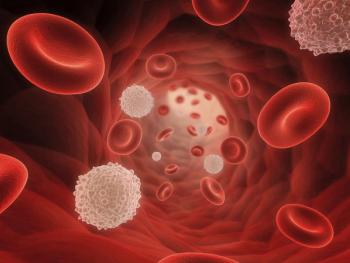
Application for Copanlisib/Rituximab Combo Submitted to FDA for Indolent NHL
Bayer seeks FDA approval for its agent copanlisib in combination with rituximab for the treatment of patients with indolent non-Hodgkin lymphoma.
Submission of a supplemental new drug application (sNDA) to the FDA for the investigational combination of copanlisib (Aliqopa) and rituximab (Rituximab) for the treatment of patients with indolent non-Hodgkin lymphoma (iNHL) was recently announced by Bayer, the company responsible for the PI3K inhibitor.1
The sNDA is supported by data from the phase 3 trial CHRONOS-3 (NCT02367040). Additionally, the company announced filing for the combination in the European Union as therapy for patients with marginal zone lymphoma, an iNHL subtype.
“The US and EU submissions of the novel combination of Aliqopa and rituximab bring us forward in advancing new treatment approaches and addressing unmet needs of patients with different types of relapsed iNHL,” Scott Z. Fields, MD, Senior Vice President and Head of Oncology Development at Bayer, said in a press release.
This study consisted of 458 patients with indolent B-cell lymphoma relapsed after prior anti-CD20 therapy who were randomly assigned to either copanlisib plus rituximab (n = 307) or a placebo plus rituximab (n = 151). This double-blind study was conducted in 186 academic medical centers internationally.2
Patients were eligible for the study if they had a previous confirmed diagnosis of CD20-positive indolent B-cell lymphoma. They must have also been progression and treatment free for at least 12 months after the last anti–CD20-containing treatment and been unwilling or unfit to receive chemotherapy and be progression and treatment free for at least 6 months after the last anti–CD20-containing treatment.
Those patients who participated must have a measurable disease with an ECOG performance score of 2 or less. Other inclusion criterion was a life expectancy of at least 3 months, available fresh or archival tumor tissue, and adequate baseline laboratory values.
Patients were eliminated from the study if they had a previous copanlisib exposure, interstitial lung disease, severely impaired lung function, known lymphomatous involvement of the central nervous system, HIV, glycated hemoglobin greater than 8.5% at screening, uncontrolled hypertension, and presence of active hepatitis B, hepatitis C, or cytomegalovirus.
Copanlisib 60 mg was given as a 1-hour intravenous infusion on an intermittent schedule on days 1, 8, and 15 of 28-day cycles or matched placebo. Intravenous rituximab 375 mg/m2 was administered weekly following copanlisib infusion.
The primary efficacy end point was progression-free survival (PFS), defined as the time from randomization to progressive disease or death from any cause. Some secondary end points were objective response rate (ORR), disease control rate, duration of response, and safety and tolerability of copanlisib.
The median follow-up for PFS was 19.2 months, with a total of 205 progression events reported, 118 in copanlisib arm and 87 in placebo arm. The median PFS was 21.5 months (95% CI, 17.8-33.0) in the copanlisib plus rituximab group versus 13.8 months (95% CI, 10.2–17.5) for the placebo plus rituximab group (HR, 0.52; 95% CI, 0.39-0.69; P <.0001).
The centrally assessed ORR in the copanlisib plus rituximab group was 81% versus in the placebo plus rituximab group at 48%. Complete responses were observed in 34% versus 15%, respectively and partial responses were observed 45% versus 29%. Corresponding median duration of response was 20.4 months versus 17.3 months.
Serious treatment-emergent adverse effects were reported in 47% of patients receiving copanlisib plus rituximab and 18% of patients receiving placebo plus rituximab. About 7% of patients in the copanlisib plus rituximab group reported hyperglycemia, 5% with pneumonitis, and 3% pneumonia. Overall, there were 43 patients (14%) in the copanlisib plus rituximab group who died compared with 20 (13%) in the placebo plus rituximab group.
Currently, copanlisib is approved for the treatment of adult patients with follicular lymphoma following at least 2 prior therapies.
References
1. Bayer Submits Regulatory Applications for Oncology Treatment Investigational Combination Aliqopa® (copanlisib) and rituximab in the U.S. and EU. News Release. Business Wire. June 21, 2021. Accessed June 21, 2021. https://bwnews.pr/3xwrZvs
2. Matasar MJ, Capra M, Özcan M, et al. Copanlisib plus rituximab versus placebo plus rituximab in patients with relapsed indolent non-Hodgkin lymphoma (CHRONOS-3): a double-blind, randomised, placebo-controlled, phase 3 trial. Lancet Oncol. 2021;22(5):678-689. doi:10.1016/S1470-2045(21)00145-5
Newsletter
Stay up to date on recent advances in the multidisciplinary approach to cancer.


















































































